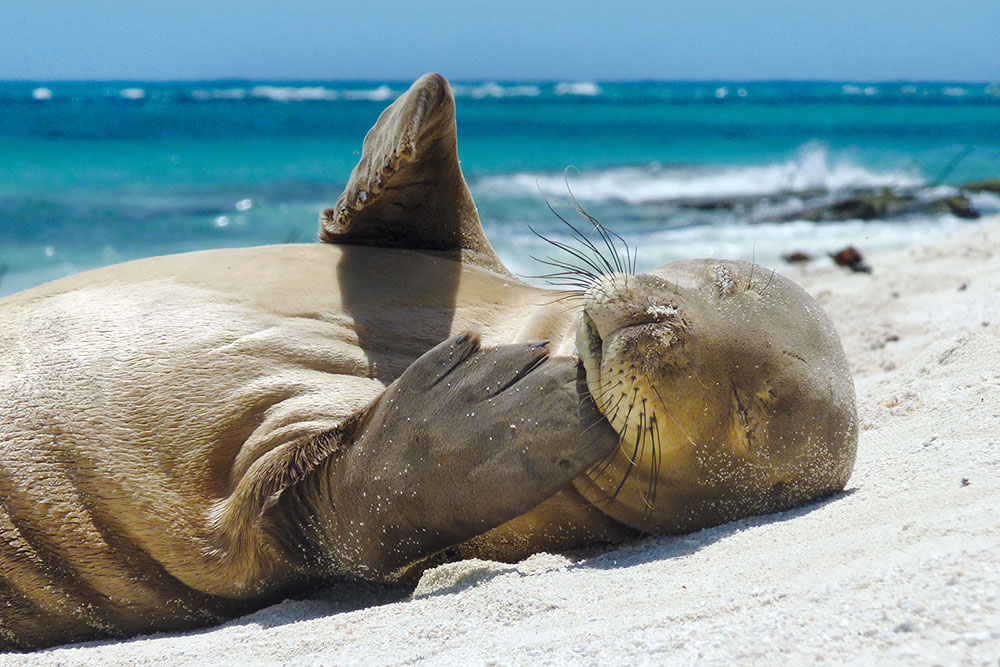Story by Lara McGlashan
Years ago, on one of my first visits to Maui, I stopped at Ho‘okipa to watch the surfers, but as I made my way down the hillside, I saw a large, dark shape on the beach — a happily napping monk seal. At the time, I had no idea what a rare and special occurrence that was; I have not seen a seal on land since.

Hawai‘i has the disconcerting notoriety of being the extinction capital of the world, and monk seals are dangerously close to making that list. Hunting almost did away with them in the late 19th century, and today, there are only about 1,400 left.
Endemic to the Islands, the monk seal is the official state mammal of Hawai‘i. Hawaiians call them ‘īlioholoikauaua, which means “dog running in the rough seas.” The folds of skin around their necks resemble the cowl of a monk’s hood, hence their English moniker.
Monk seals spend more than two-thirds of their lives in the water. When submerged, their heart rate drops, reducing their need for oxygen and allowing them to stay under for up to 20 minutes. The other third of their lives is spent on land, sleeping, nursing or molting. “Once a year, monk seals undergo a ‘catastrophic molt,’ where they shed the top layer of their skin and fur,” says Michelle Barbieri, Ph.D., lead scientist for the NOAA Hawaiian monk seal research program.
Mothers deliver a single pup, and the pair stays on the beach for about six weeks to nurse. During this time, the pup can gain up to 175 pounds!
Threats to monk seals include food limitation, shark predation, habitat loss, entanglement and especially toxoplasmosis, a parasite spread by cat feces. But thanks to NOAA and its partners, not all is lost. “The monk seal population has been increasing 2 percent per year for the last decade,” says Barbieri. “In fact, 30 percent of the current population is alive today thanks to our recovery actions.”
You can help, too. “Monk seals have one of the highest entanglement rates of any pinniped species, so participate in beach cleanups whenever possible,” says Barbieri. When fishing, use barbless circle hooks, reel in your line if seals are present, and reuse or share your leftover bait (don’t feed it to the seals). And most of all, do not feed any of the feral cats in Hawai‘i.
If you’re lucky enough to see a seal, keep your distance. “Follow the ‘rule of thumb’ to figure out how much space to give them,” says Barbieri. “Make a thumbs-up gesture, extend your arm straight out and turn your thumb parallel to the ground. If it covers the entire seal, you are far enough away.”
To report a monk-seal sighting, call the NOAA Pacific Islands Marine Wildlife Hotline at 888.256.9840.





